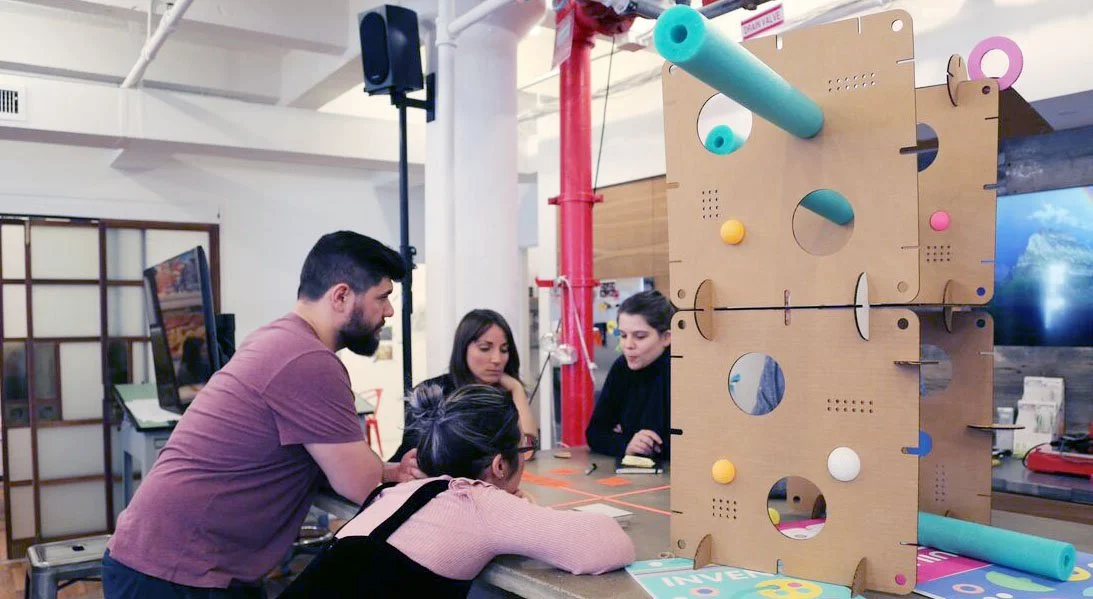The magic circle of play; and how we use it in ethnography.
The Magic Circle of Play is a concept in game studies that refers to the imaginary boundaries that separate the world of play from the outside world. It’s the idea that when you are in play, there is a shared understanding between players that they are entering a context where different rules and behaviors apply.
The concept of the Magic Circle was first introduced by Johan Huizinga, a Dutch cultural historian, in his book "Homo Ludens" (1938). Huizinga argued that play is a fundamental aspect of human culture and that it creates a sacred space or ritualized zone where participants are free to experiment and create their own meanings and values.
We have found that when conducting ethnography, incorporating play creates a sense of freedom that allows participants to express themselves in deeper and more authentic ways.
Here are three examples of how we used play in recent client work to conduct everything from focus groups to data collection and analysis.
A scavenger-hunt photo journal to tackle bias, client General Motors
One powerful method for collecting data in an ethnographic research project is what we call in our team a scavenger hunt photo journal. This approach allows researchers to gather visual data about a particular cultural or social group by sending participants on a scavenger hunt to capture specific images and artifacts that represent their experiences and perspectives. We used this method for a project that aimed to capture data in a context where data interpretation is often racially biased.
By using play as a tool for data collection, our research team was able to have a more inclusive approach, where participants are active agents in the research process. This helped to break down traditional power dynamics and allowed for more equal participation in the research process.
Moreover, the use of a scavenger hunt allowed us to collect visual data in a unique and engaging way. Rather than relying solely on interviews or surveys, the scavenger hunt provided a more immersive and personal approach to data collection. Participants were able to use their own creativity and perspectives to capture images that they felt represented their experiences and perspectives.
A circle of playful objects for a hesitant focus group, client IREX
One of our most frequent activities specifically when gathering a focus group who might know each other as colleagues but not necessarily have deeper connections. It starts like this; participants bring to the session a playful object from their childhood. The participants might initially be hesitant, not knowing how this was relevant to the research we are conducting. However, as soon as we begin sharing their objects and the stories behind them, the atmosphere in the room becomes more relaxed and open.
For example, in one session a participant brought a handmade ball that she had created with her father when she was a child. She shared that this experience had inspired her to become a teacher and that she wanted to create similar meaningful experiences for her own students. This led to a discussion about the role of creativity and imagination in teaching and learning.
Overall, this simple activity of sharing playful objects from our childhood helps to create a sense of connection and shared experience among the participants. It also allowed us, as researchers, to learn more about the personal backgrounds and experiences of the educators we were working with, which in turn helped to inform the design of our training model for IREX. By starting with a personal and playful activity, we were able to build trust and create a more engaging and productive focus group session.
A brainstorming gallery for busy leaders, client Understood.org
Starting from a blank paper can be a daunting task for anyone, but it becomes even more challenging when dealing with a group of busy leaders who have limited time to spare. This was the case with our project, which focused on Diversity, Equity, Inclusion, and Accessibility. We had conducted a Landscape and Ethnographic Research study and had gathered a significant amount of data, but we knew that presenting it solely as a document would not be the most effective way to get the leadership team on board and engaged.
To address this challenge, we decided to transform our findings into an interactive visual gallery that included key insights, tidbits of storytelling from interviews, examples of other platforms that had solved similar problems and words that reflected key patterns in our findings. We wanted to create a space that was both engaging and informative, one that would allow the leaders to immerse themselves in the data and come up with ideas quickly.
We facilitated a playful round-robin exercise in which the leadership team was able to interact with the data and each other, discussing ideas and generating solutions. This exercise was highly effective in getting the group to think creatively and collaboratively, resulting in some big ideas emerging in a short amount of time.
By presenting our findings in a visually engaging and interactive way, we were able to break down the barriers that often come with presenting dense ethnographic data to busy leaders. The visual gallery allowed the leadership team to see and understand the insights in a more tangible way, which ultimately led to a more productive and efficient brainstorming session.
We hope you find these ideas inspiring in your own practice!

